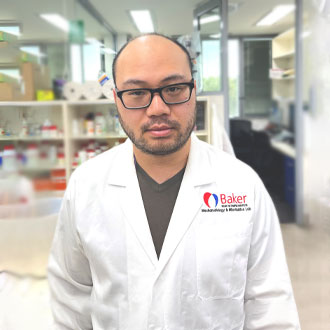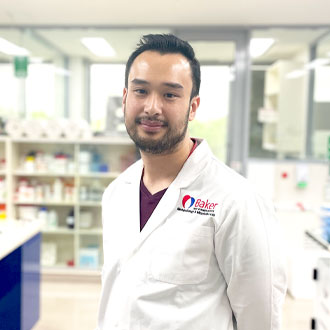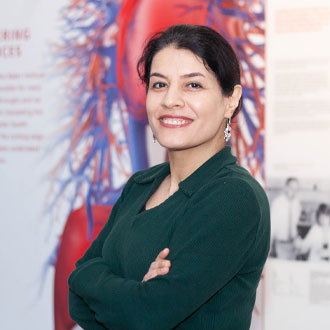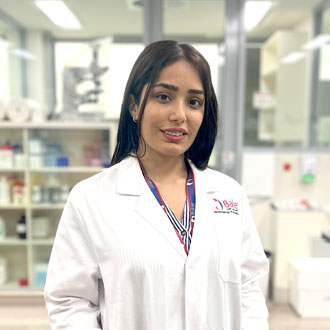About the Mechanobiology and Microfluidics laboratory
The Mechanobiology and Microfluidics laboratory pioneers the development of advanced bioengineered and humanised models of human blood vessels and heart valves to investigate the mechanobiological mechanisms underlying cardiovascular disease. Using state-of-the-art microfabrication, biomaterials engineering, and organ-on-a-chip platforms, we recreate physiologically and pathologically relevant microenvironments to understand how hemodynamic forces and extracellular matrix (ECM) stiffness drive vascular dysfunction and disease progression.
Our research is motivated by the need to address age-associated cardiovascular diseases (CVDs) such as atherosclerosis, calcific aortic valve disease (CAVD), vascular ageing, and arrhythmia. These conditions are closely linked to structural and functional changes in the vascular system — including arterial stiffening, endothelial dysfunction, and disturbed blood flow — which initiate pathological responses in endothelial, smooth muscle, and immune cells.
What is mechanobiology?
Mechanobiology is the study of how mechanical forces—such as shear stress from blood flow, stretch during heartbeat, or stiffness of the vessel wall—are sensed and translated by cells into biological signals. In the cardiovascular system, these forces are critical regulators of cellular behaviour. Our lab explores how disruptions in these mechanical cues, as seen in ageing or disease, can lead to vascular inflammation, fibrosis, calcification, or immune activation. Understanding these mechanisms enables us to identify new therapeutic opportunities targeting the mechanical root causes of disease.
What is microfluidics?
Microfluidics involves the manipulation of fluids at a very small scale — typically in channels thinner than a human hair. In our lab, microfluidic devices are used to mimic blood flow, pressure, and shear stress in a precisely controlled environment. These platforms allow us to study how cells respond to physical forces, and how biomechanical changes — such as those in stiff or narrowed arteries — affect vascular function. Microfluidics provides high resolution, reproducibility, and throughput, making it a powerful tool for simulating complex physiological conditions in vitro.
What is organ-on-a-chip?
An organ-on-a-chip is a microengineered device that replicates the structure, mechanical environment, and function of human organs — such as blood vessels, heart valves, or the vascular endothelium — on a small chip-like platform. These systems combine living human cells, microfluidic channels, and biomaterials to recreate organ-level responses in vitro. Our lab develops vessel-on-a-chip and valve-on-a-chip models that simulate healthy and diseased cardiovascular tissue. These models enable us to explore disease mechanisms and test potential treatments in a realistic, ethical, and human-relevant way — reducing reliance on animal models.
Our research focus
We focus on how mechanical forces such as shear stress, cyclic stretch, and matrix stiffness are sensed by cells — via mechanosensitive ion channels like Piezo1 — and how these cues regulate cell behaviour and pathology. For example, we have shown that shear stress can trigger immune cell activation and NETosis, contributing to vascular inflammation and thrombosis.
Our platforms are used to study:
- Vascular ageing and arterial stiffening.
- Atherosclerosis and immune cell-endothelium interactions.
- Calcific aortic valve disease, including endothelial-mesenchymal transition and valve calcification.
- Arrhythmia, by simulating disturbed blood flow in engineered models.
Who we are
The Mechanobiology and Microfluidics laboratory is deeply interdisciplinary, operating at the interface of biology, physics, engineering, and medicine. Our team includes biomedical scientists, bioengineers, and clinicians working collaboratively to solve some of the most pressing questions in cardiovascular research.
We welcome students and researchers from diverse backgrounds — especially those interested in biomedical science, biomedical engineering, material science, and translational medicine — to contribute to the next generation of mechanobiology-informed discoveries.
Media and videos
COSMOS: How organ-on-a-chip technology is revolutionising the way we study cardiovascular disease
Video: 7NEWS Australia: a breakthrough from Melbourne scientists could lead to new lifesaving treatment for patients with heart disease. It's hoped their discovery will help prevent one of Australia’s biggest killers. (30sec)
Video: AJE Video Bytes produced for Baratchi et al. “Piezo1 expression in neutrophils regulates shear-induced NETosis.” Nature (2024). (1min 37sec)











